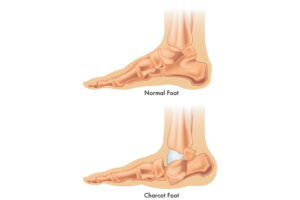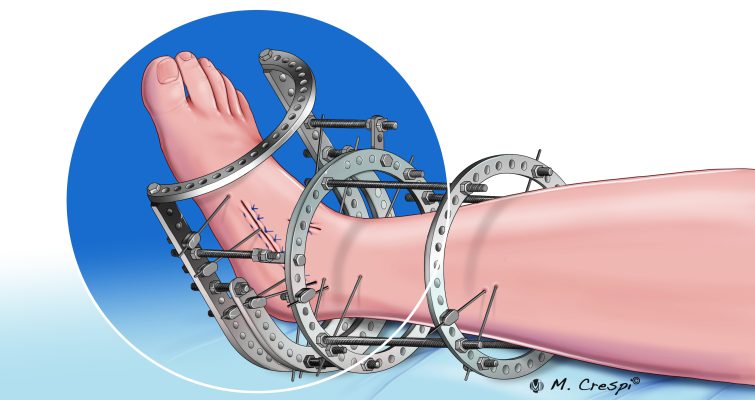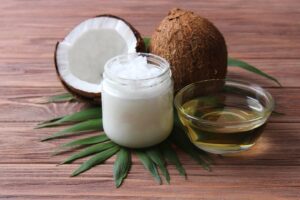Charcot foot, also known as Charcot neuroarthropathy, is a serious condition that affects individuals with neuropathy, especially those with diabetes. It involves a weakening of the bones in the foot due to nerve damage, leading to deformity, instability, and even potential joint collapse if left untreated. While conventional medical treatments such as immobilization, surgery, and medication are often recommended, many individuals seek natural alternatives to complement their treatment plan. In this article, we’ll delve into the world of natural treatment for Charcot foot, exploring various methods aimed at promoting healing, relieving symptoms, and improving overall foot health.
Contents
What is Charcot Foot?

Charcot foot, also known as Charcot neuroarthropathy, is a serious condition that primarily affects individuals with neuropathy, particularly those with diabetes. It involves progressive weakening and degeneration of the bones and joints in the foot, leading to deformity, instability, and potential joint collapse if left untreated.
The condition often develops following repetitive trauma or stress to the foot, which can occur due to activities such as walking or standing. Without the usual sensation of pain to alert the individual to an injury, minor repetitive trauma can go unnoticed and lead to microfractures and joint damage. Over time, this can result in a cascade of inflammatory responses and bone resorption, weakening the bones and causing the characteristic deformities associated with Charcot’s foot.
Charcot Foot Natural Treatment Methods
Natural treatment for Charcot foot aims to complement conventional medical interventions by addressing symptoms, promoting healing, and improving overall foot health. While these approaches may not replace medical treatment, they can offer additional support and help manage the condition effectively. Here are some natural treatment methods for Charcot’s foot:
Diet and Nutrition
A well-balanced diet rich in nutrients can play a crucial role in managing Charcot’s foot.
- An anti-inflammatory diet focuses on consuming whole foods such as fruits, vegetables, whole grains, and healthy fats like those found in nuts, seeds, and fatty fish.
- These foods are rich in vitamins, minerals, and antioxidants, which help reduce inflammation in the body. Additionally, individuals with Charcot’s foot, particularly those with diabetes, should prioritize controlling their blood sugar levels through diet.
Limiting the intake of processed foods, refined sugars, and carbohydrates can help stabilize blood sugar levels, which in turn may reduce the risk of complications associated with Charcot’s foot.
Herbal Supplements

Herbal supplements can offer natural alternatives for managing inflammation and promoting bone health in individuals with Charcot’s foot.
- Turmeric, a spice commonly used in traditional medicine, contains curcumin, a potent anti-inflammatory compound.
- Studies have shown that curcumin may help reduce inflammation and alleviate pain associated with various conditions, including Charcot’s foot.
- Similarly, Boswellia serrata, also known as Indian frankincense, can help in Ayurvedic medicine for its anti-inflammatory properties. This herb may help reduce swelling and improve joint function in individuals with Charcot’s foot.
However, it’s important to consult with a healthcare professional before starting any herbal supplements to ensure they are safe and appropriate for individual health conditions and medications.
Physical Therapy and Exercise
Physical therapy plays a vital role in managing the Charcot’s foot by improving joint mobility, strengthening muscles, and promoting overall foot health. A physical therapist can design a personalized exercise program tailored to the individual’s needs and abilities.
Gentle exercises such as stretching, range of motion exercises, and low-impact activities like swimming or cycling can help improve flexibility and circulation in the feet without putting excessive stress on the affected joints.
Additionally, physical therapy techniques such as manual therapy, massage, and joint mobilization may help reduce pain and stiffness in individuals with Charcot’s foot, improving their quality of life and mobility.
Mind-Body Therapies
Mind-body therapies focus on the connection between the mind and body and aim to promote relaxation, reduce stress, and improve overall well-being.
- Techniques such as mindfulness meditation, deep breathing exercises, and guided imagery can help individuals with Charcot’s foot manage pain, anxiety, and depression commonly associated with chronic conditions.
- By incorporating these practices into daily life, individuals can enhance their ability to cope with the challenges of living with Charcot Foot and improve their quality of life.
Additionally, mind-body therapies may help individuals develop a greater sense of awareness of their bodies, including any changes or sensations in the feet, which can aid in early detection and management of complications.
Lifestyle Modifications

Lifestyle modifications are essential for managing Charcot’s foot and preventing further complications. For individuals with diabetes, maintaining optimal blood sugar control is paramount to prevent neuropathy and reduce the risk of Charcot foot development.
- This involves adhering to a healthy diet, regular exercise, monitoring blood sugar levels, and taking medications as prescribed.
- Additionally, quitting smoking is crucial, as smoking impairs circulation and delays healing, increasing the risk of complications in individuals with Charcot’s foot.
- Maintaining a healthy weight through proper diet and exercise can also reduce pressure on the feet and lower the risk of developing foot problems.
Finally, practicing good foot hygiene, inspecting the feet regularly for any signs of injury or ulceration, and wearing appropriate footwear are essential habits for individuals with Charcot’s foot to prevent complications and promote foot health.
Conclusion
While natural treatment for Charcot foot may offer symptom relief and support overall foot health, it’s essential to approach them as complementary to conventional medical care rather than as standalone therapies. Individuals with Charcot’s foot should work closely with healthcare professionals to develop a comprehensive treatment plan tailored to their specific needs and circumstances. By combining natural approaches with conventional treatments, individuals can optimize their chances of managing Charcot’s foot effectively and improving their quality of life.
Do you want to get rid of diabetes? Join our online diabetes treatment program and reverse Diabetes naturally through lifestyle changes such as a Personalized Diet plan, Exercise, Yoga, dieticians, and health coaches.


